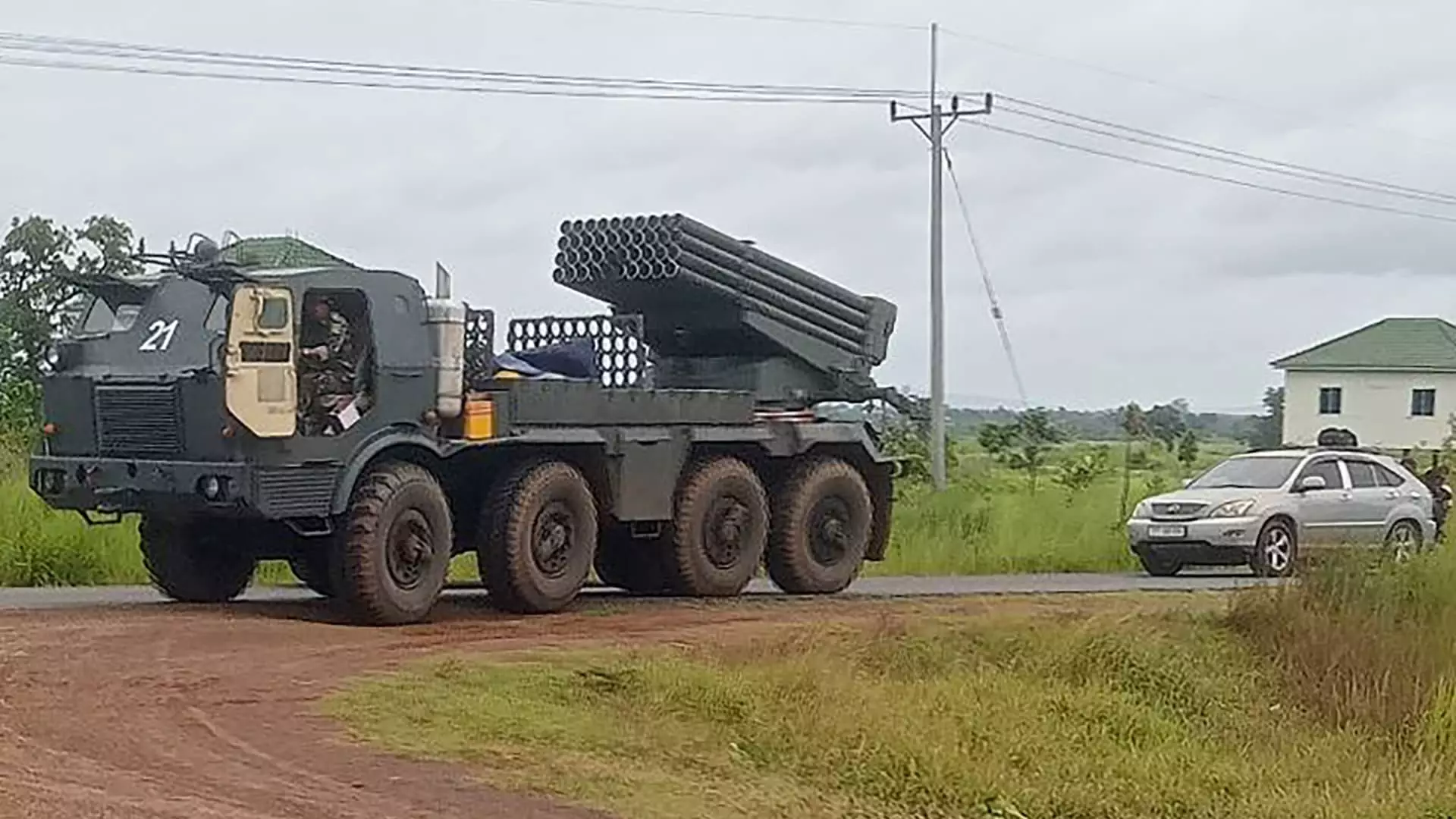The ongoing clashes between Thailand and Cambodia serve as a stark reminder of how regional geopolitical tensions can threaten economic stability, especially in a region heavily reliant on tourism. Historically, Southeast Asia has oscillated between periods of peaceful cooperation and localized conflicts, but the recent escalation signifies a concerning trend towards militarized disputes. While both nations benefit significantly from tourism—contributing approximately 12% to Thailand’s GDP and about 9% to Cambodia’s—the stability of these sectors is precariously linked to political harmony. In this context, the conflict demonstrates how deep-seated territorial disputes can swiftly ripple through economies that are increasingly dependent on perception and trust.
Thailand’s tourism industry, buoyed by vibrant cities like Bangkok and tourist hubs such as Phuket, has established a reputation for resilience. Yet, the proximity of conflict zones in border areas heightens the risk of spillover effects, with potential repercussions for traveler safety perceptions and international travel advisories. It’s critical to understand that the regions most affected by military activities are often far from the main tourist locales, which tempers some immediate fears. Nonetheless, the psychological impact of conflict—especially in a nation that draws over 35 million visitors annually—can’t be underestimated. A series of minor incidents or sustained hostilities could deter potential tourists, undermining economic recovery and employment in sectors that depend on international visitors.
Cambodia’s situation is markedly more precarious. Although its contribution of tourism revenue to the national economy is comparatively modest, the sector’s fragility makes it exceedingly vulnerable to shutdowns or disruptions. Unlike Thailand, Cambodia lacks the extensive policy frameworks, fiscal reserves, or institutional safeguards to cushion the blow of conflict-induced shocks. This structural weakness restricts its ability to recover swiftly from turbulence and underscores the potential for long-term economic harm. Moreover, Cambodia’s heavy reliance on border crossings with Thailand for tourism, gambling, and trade makes it particularly susceptible to the ongoing disputes.
Geopolitical Tensions and Diplomatic Strains
The recent deadly skirmishes in the disputed “Emerald Triangle” area symbolize a dangerous escalation. Both countries have engaged in provocative rhetoric, recalling diplomats and expelling envoys, which raises fears of broader regional destabilization. Analysts point out that the use of advanced military hardware such as Thailand’s F-16 fighter jets and Cambodia’s BM-21 rockets signals a shift from low-grade border clashes to more intense military confrontations. These actions are often driven by nationalist fervor in both nations, where political leaders leverage territorial disputes to rally domestic support, further complicating de-escalation efforts.
The diplomatic fallout has not only strained bilateral relations but also attracted international concern. The United States’ early call for an immediate end to hostilities indicates a recognition that regional stability hinges on diplomatic restraint. However, the deep-seated mistrust, compounded by accusations regarding the laying of landmines and disputed border activities, makes resolution elusive. The complexity is heightened by the regional political climate—conflicts in Myanmar and ongoing South China Sea disputes create a charged environment where finding common ground appears increasingly difficult.
It is evident that militarized responses risk entrenching divisions rather than resolving underlying issues. The swift mobilization of heavy military assets reflects a potential for escalation that could spiral beyond control, especially as nationalist sentiments run high. This scenario underscores the importance of diplomatic engagement, but in the current atmosphere, such efforts are hindered by mutual distrust and domestic political pressures.
The Economic Outlook and Strategic Considerations
Practically speaking, Thailand’s economy appears better positioned to absorb shocks from border conflicts. The country’s extensive tourism industry, concentrated in urban and well-established beach destinations far from the conflict zones, cushions the impact of border clashes. Experts like Joshua Kurlantzick emphasize that most tourists frequent destinations like Bangkok and Phuket, which remain largely insulated from immediate violence. This geographic separation offers Thailand a slight advantage, allowing it to maintain economic momentum despite regional instability.
Conversely, Cambodia’s economy bears a heavier burden from the ongoing conflict. Its reliance on border trade, including cross-border gambling and tourism, makes it more susceptible to disruption. The border closures inhibit not only international tourists but also the flow of local visitors who patronize Cambodian casinos—an important revenue source. Kasem Prunratanamala’s insights highlight that even domestic tourism near the border is limited, restricting Cambodia’s ability to pivot or recover swiftly. The risk is that prolonged instability could freeze economic activity, with ripple effects on employment and social stability.
Strategic vulnerabilities, such as limited policy tools and fiscal reserves, deepen Cambodia’s precarious position. Without robust mechanisms to manage crises, the country’s economic resilience hangs in the balance. Meanwhile, Thailand’s broader economic buffer and diversified tourism portfolio afford some leeway but do not render it immune to negative perceptions.
The larger geopolitical picture questions whether regional players might seek mediation or whether the conflict could inadvertently ignite broader instability. History indicates that once military confrontations become entrenched, de-escalation demands concerted diplomatic efforts backed by regional organizations. However, rising nationalism and entrenched territorial claims hinder swift resolution, making the path toward peace arduous and uncertain.
This situation underscores a fundamental truth: the security of Southeast Asia’s economic future depends not just on rebuilding infrastructure or marketing campaigns, but also on the willingness of leadership to prioritize diplomacy over conflict. With the region’s economies at stake and regional stability in flux, the coming months will be crucial in determining whether the escalation is contained or morphs into a protracted confrontation that reshapes regional dynamics permanently.


Leave a Reply